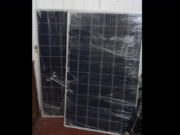The COVID-19 pandemic has, without doubt, allowed the energy transition movement to take on new life. In fact, 2021 is expected to see global investments in projects focused on renewable sources of energy (solar, wind and hydro) reaching a new record.
A Rystad Energy analysis shows that spending is expected to reach US$243 billion, narrowing the gap with oil and gas spending, which is projected to be relatively flat this year at US$311 billion. This would be a far cry from the industry’s better days, as just in 2019, exploration and production companies splurged US$422 billion on supply purchases.
Expounding on this front, the Norwegian consultancy firm said, “The spending gap between renewable energy and oil and gas is closing, as capital expenditure for renewables is now just 22% below the estimate for upstream projects. Most of the renewable energy spending will go towards onshore wind projects, rising to US$100 billion from US$94 billion in 2020. Solar PV spending is expected to climb to US$96 billion this year from US$88 billion last year, while offshore wind will see capital expenditure (CapEx) grow to US$46 billion from US$43 billion.”
Rystad was keen to note that most of the expenditure stems from Asia, which has 156 gigawatts (GW) of capacity under construction as of January 2021, followed by Europe with 32 GW.
Concerning Upstream capex, Rystad said this is expected to increase by less than 2% in 2021, with spending on greenfield projects declining by 6%. However, sanctioning activity is estimated to increase this year by 30%, mainly due to Qatar’s $30 billion North Field East development gas project, which makes up 33% of the total budget to be sanctioned this year.
Chinmayi Teggi, Energy Service Analyst at Rystad Energy was keen to note that last year’s events forced leading oil and gas businesses to look at strategies to reduce exposure to the risky market amid the energy transition. Teggi said, “Oilfield service suppliers, for instance, have started a considerable transformation, hoping to be more relevant in a greener market and become a more attractive option for investors.”
Despite the growing investments in renewable energy projects, Guyana’s nine billion barrels of oil equivalent resources remain in the safe zone. Arthur Deakin, Co-Director of Energy at Americas Markey Intelligence is on record as stating that the high quality of the Stabroek Block crude will ensure that Guyana is one of the last to be affected by the energy transition. He believes that Guyana has a 50-year time span within which to monetize its assets as oil would still be needed in the transition to cleaner sources.











